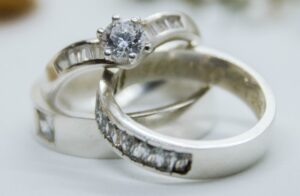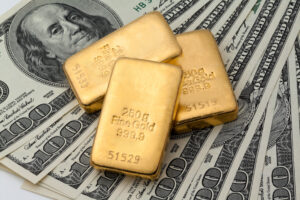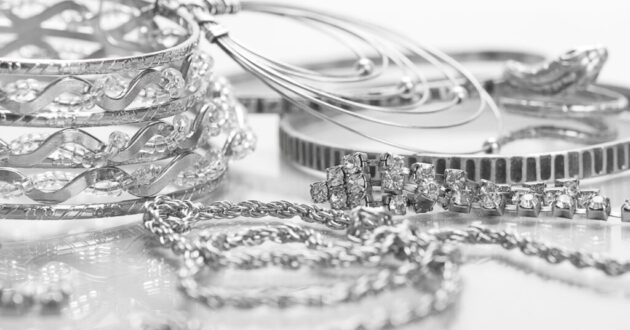Why Is Platinum So Expensive?
Is Platinum The Same Things As White Gold?
Platinum is a much harder metal than gold and can be used to make jewelry without too much modification and so, it commands a higher price than gold. White gold is yellow gold mixed with other elements like palladium to give its white color and to strengthen it for use in jewelry.
Platinum is a unique, precious metal that is rarer than gold, is stronger & is more enduring. Platinum was first found in the 16 century during the European conquest of S. America and first used in modern jewelry during the mid 1800’s. During the roaring twenties Art Deco & Art Nouveau are (1920-1930) platinum was very popular in the U.S.. During the first 40 years of this century, Platinum was the preferred metal for wedding and engagement rings. From 1900 to 2011, approximately 14,200 metric tons of PGEs was produced, and roughly 95 percent of that production took place between 1960 and 2011. About 90 percent of that production came from South Africa and Russia. The secondary supply of platinum, palladium, and rhodium is obtained through the recycling of catalytic converters from end-of-life vehicles, jewelry, and electronic equipment. Recycled platinum, palladium, and rhodium provide a significant proportion of the world’s total supply; these secondary sources are sufficient to close the gap between world mine production and consumption.
- Because of its rarity, Platinum was declared a strategic material during W W II and could not be used for jewelry, but in 1989 more platinum was used for jewelry than in any other year – – the majority was used in Japan. Japan consumes 100 times more than we do in the U.S. and the Europeans 7 times as much as us.
- Pure Platinum – like 24k gold – is too soft for hard jewelry ware, so platinum is alloyed with 10% Iridium in the US., copper or cobalt in Europe and palladium in the Far East.
- Platinum has certain advantages. It is harder for a goldsmith to melt down accidentlly as its melting point is 3,200° vs 1,650° for gold.
- Platinum is extremely workable and durable, highly resistant to oxidation, will not smudge or tarnish, takes a very high white polish and is hypoallergenic.
- Platinum also bends and folds without cracking, resists chemical corrosion and has high tensile strength and can "dead set" on larger and /or fragil gemstones.
- Due to platinums hardness it requires greater force, than if it were gold, during most mechanical processes and several extra steps when finishing. It is also a very poor conductor of heat and has a very high temperature range for soldering which makes it much more difficult to solder.
- When platinum is scratched the metal moves but when gold is scratched metal is removed.
Terms Used for Platinum and Palladium
JEWELERS PLATINUM: a heavy silver-white metal of 90% platinum and 10% iridium. The iridium acts as a hardening agent. Named by Spanish explorers in Columbia from the word “platina” meaning “silver of little value.”
JEWELERS PALLADIUM: a silver- white metal of 95% palladium and 5% ruthenium. The ruthenium acts as a hardening agent.








